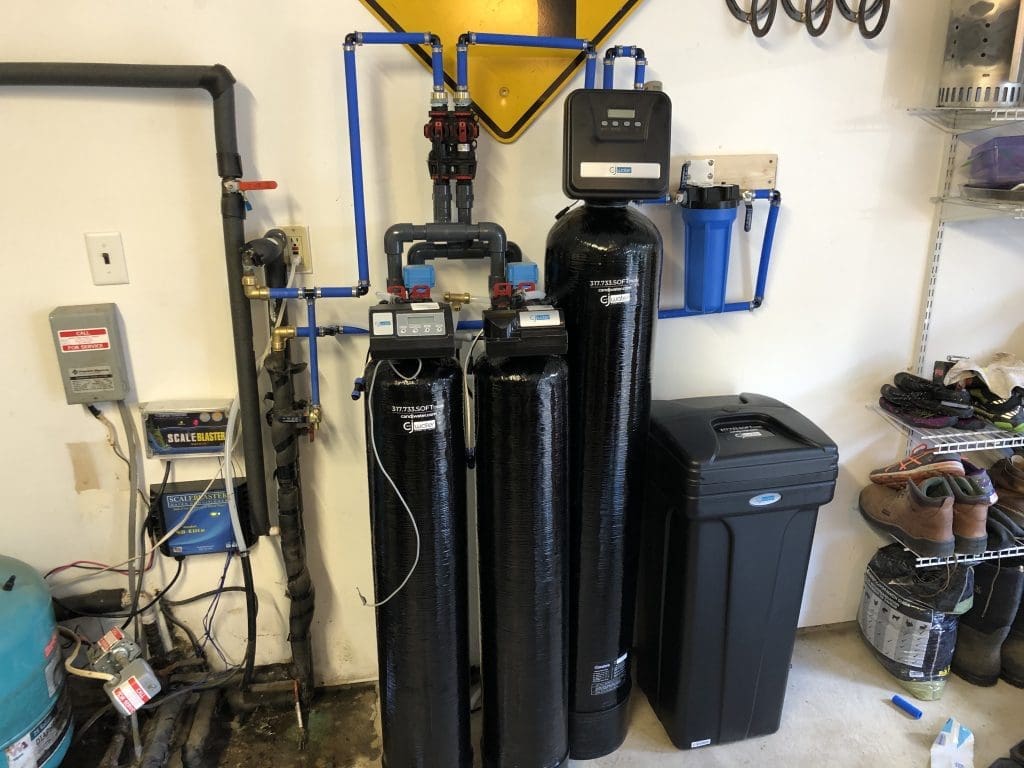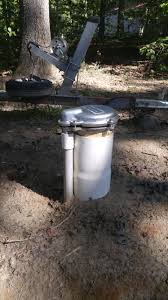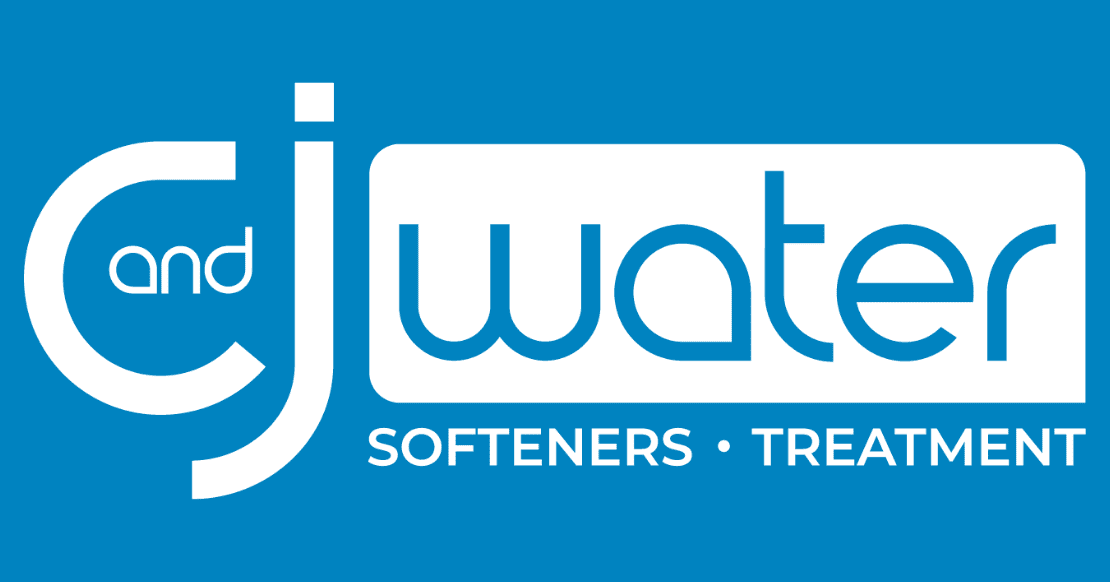Common Water Well Owner Mistakes
A reliable water source right outside your home or business can provide many benefits. However, to take full advantage of your fresh groundwater supply, you must ensure that your well is properly drilled, installed, and maintained. A well is the most common way to obtain groundwater for household use. A well is basically a hole in the ground, held open by a pipe (or casing) that extends to an aquifer. A pump draws water from the aquifer for distribution through the plumbing system. Unfortunately, despite all the advancements in water well technology, property owners still make costly missteps. This article is the second in our “Confessions of a Well Driller” series, which aims to inform and educate Central Indiana well owners by utilizing our quarter-century of experience drilling and maintaining private water wells.
Watch out for these common water well mistakes to prevent unnecessary delays and unexpected expenses.
1. Forgetting the Filters
Because well water is raw, untreated groundwater may contain contaminants such as bacteria and pathogens. Most homes with private wells consume this water directly. Sadly, it is one of the biggest mistakes they make that you can avoid by installing a well water filter. A reverse osmosis drinking water system or a whole house water filter can eradicate all kinds of impurities from your water. Moreover, these systems are convenient to use and are also easy to maintain.
Also, most houses with private wells get yellow or white stains on their sinks and fixtures. It is because water from a well usually contains a high amount of iron. Iron isn’t harmful, but it can affect the taste of water and leave stains everywhere. There are many tricks to prevent stains, but installing an iron filtration unit is best. This system oxidizes the iron to remove it from your water. Furthermore, many homeowners experience sediment or sand being pumped into their homes. These problems will require additional filtration equipment.
2. Skipping the Softener

Many households with private wells don’t feel the need to install a water softener in their homes. However, this isn’t a wise thing to do. There is no better solvent than water. It easily absorbs minerals from the soil. Most of these substances contribute to the hardness of the water. Private wells usually hold a high amount of magnesium and calcium. Both these minerals make water hard that can ruin your skin and hair if used. Besides, hard water can cause itchiness and irritation that increases with time. Hard water is also bad for your clothes, utensils, and pipes in your house.
So, is there a way to get rid of it?
You can remove all minerals from your water by installing a water softener for well water. Water softeners trap magnesium and calcium and replace them with other soft minerals.
But, like any home water treatment system, a water softener requires continuous maintenance and cleaning. It is important to prevent ugly soap build-up on your faucet every day.
3. Concealing the Casing
Your water well is a hole drilled into the ground to access the water supply and should have a PVC casing (wellhead) that rises at least 12 inches above the ground. A lot of older homes have a well that is buried or in a pit. Years ago, wells were completed in pits below ground level, so the pump and water pipes would not freeze in cold weather. Well pits, however, represent a serious health hazard because contaminated floodwater and runoff can easily flow into a well pit and get into the well itself. Well pits are also a safety hazard. Children and animals may fall into the pit due to missing or deteriorated pit covers. Farming equipment may fall into a pit when driven over it. Toxic gases can also build up inside a well pit, making it dangerous to enter and work. Current well construction rules prohibit the construction of well pits. When a wellhead is buried underground, it is at greater risk of surface water infiltration and, therefore, exposure to potential nearby sources of contamination like road salt, pesticides, fertilizers, oil and gasoline, etc. It also makes it difficult to access during preventative maintenance or repairs.

Also, some homeowners with a private water well just don’t like the ascetics of a wellhead in their yard or landscaping. Some people see a wellhead as an eyesore and decide to cut back the casing and bury it during landscaping. Do not pile snow, leaves, or other materials around the well. Slope the soil away from the well casing to promote proper drainage. Be careful when working around your well. Avoid damaging the well casing, which could jeopardize the sanitary condition of your well. Some people plant flowers or shrubs around their well in an attempt to conceal it as much as possible. This may not be as risky as burying the well head, however, it is not a good idea to add plant fertilizers or pesticides to the soil around your well, and the ground around the well should slope away from it. In the case of shrubs, the root mass could interfere with the wiring extending out from the ground and cause problems with well function.
At the top of the casing is a well cap. A well cap from C&J is made of rust-proof aluminum and sturdy thermoplastic. It prevents bugs, rodents, and other foreign objects from contaminating your well and polluting your water source. Be sure not to tamper with your well cap, but periodically ensure it is tight and secure. If you need to access your well, call a licensed and experienced professional.
4. Hoarding the Hazardous
Safe, potable groundwater is one of our most precious natural resources. It can be contaminated and made dangerous, even totally useless for drinking, by improper well drilling and pump installation practices. Storing petroleum products or other chemicals near your well is not a great idea. Anytime you house a potential source of contamination near your well, you risk contaminating the groundwater aquifer in the event of a leak or spill. Once the groundwater aquifer becomes contaminated, your well and potentially neighboring wells may have to be permanently decommissioned.

Also, Indiana law also states that a water well may not be closer than 50 feet to any part of a septic system. When a well is too close to a septic system or other sources of wastewater, a variety of contaminants can enter your well water, including bacteria—such as e. coli or coliform—viruses, phosphates from detergents and soaps, chemicals from paint, drain cleaners, and other household products. In high amounts, these contaminants can cause illnesses or diseases. If you suspect your well has been contaminated, it is important to have your water tested as soon as possible. If a problem is found, water treatment solutions like chlorination, reverse osmosis, or UV purification may be able to make your water safe enough to drink again. Otherwise, repairs to the well or septic system may be necessary.
5. Putting off Prevention
Many homeowners neglect preventative maintenance and only think about the quality of their well when something goes wrong. While C&J offers emergency service par excellence, many water well issues can be preempted with regular measures like a well cleaning, bacteria testing, and an annual six-point inspection. Just like you change your smoke detector batteries, replace your furnace filter, or change the oil in your car, your private water well requires some actions to keep it running smoothly. A professional water well cleaning from C&J can extend the life of your well and keep your water clean and fresh tasting. Bacteria testing is recommended at least yearly and is very important to ensure your water is not dangerous to your family.
To avoid making these common mistakes, or for more information about your private water well, download our guide to owning a water well, or contact C&J today!









